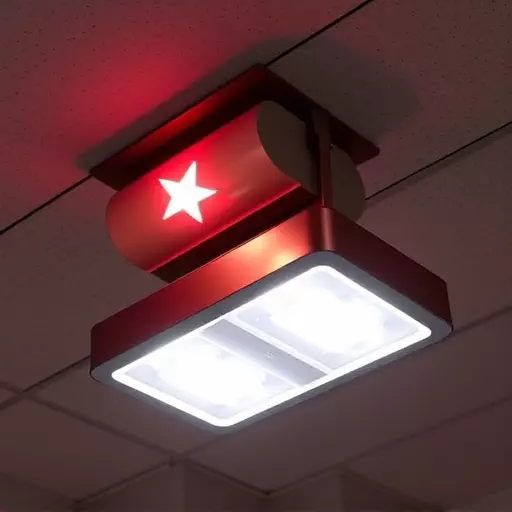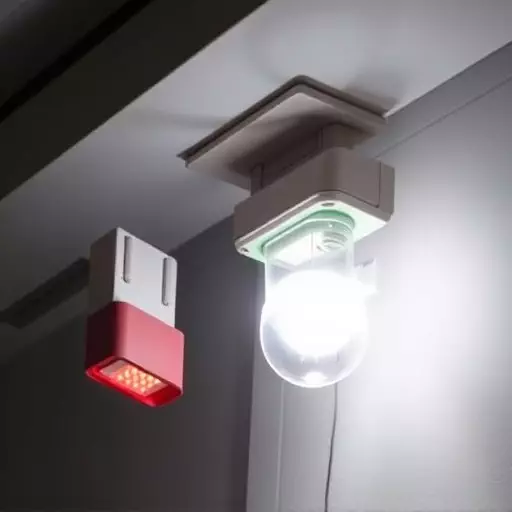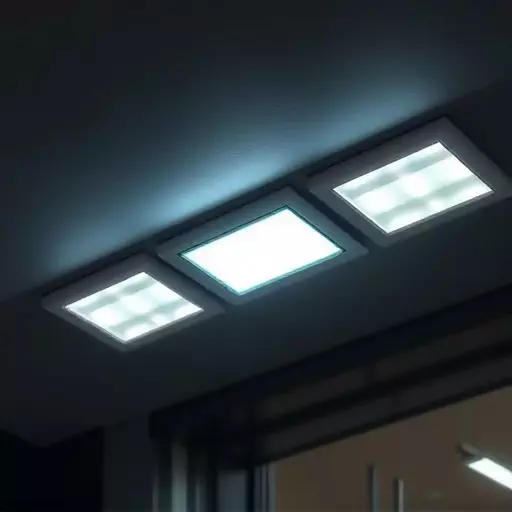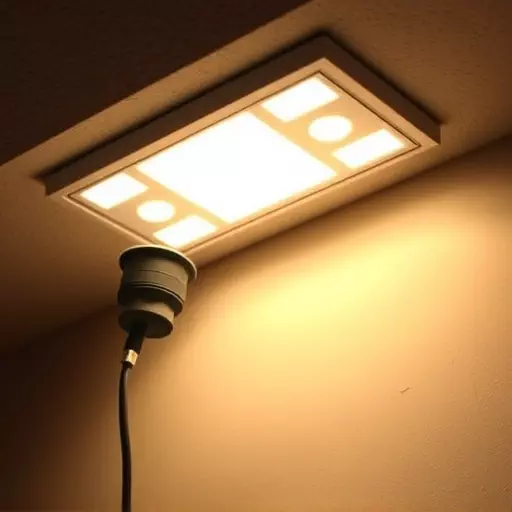In times of emergencies, reliable lighting is vital for home safety in Jacksonville. Emergency light installation strategically places automatic lights, offering energy-efficient types like LED and solar-powered options. Solar-rechargeable lights harness sunlight, providing a sustainable backup power source during outages or natural disasters. Installation involves selecting the right type (LED, battery-backup, solar), strategic placement for maximum impact, and basic maintenance. Benefits include enhanced safety, reduced energy bills, and increased property value.
Looking to enhance your Jacksonville home’s safety and energy efficiency? Consider solar-powered emergency lights. This comprehensive guide explores the entire emergency light installation process in Jacksonville, delving into the benefits of such lighting, from improved safety to substantial energy savings. We’ll break down the different types—LED, battery-backup, and solar—and provide a step-by-step installation tutorial tailored for your city. By choosing solar, you’re not just securing your home but also contributing to a greener environment.
- Understanding Emergency Light Installation: Why Jacksonville Homes Need Them
- The Solar-Powered Revolution: How It Works and Its Advantages
- Navigating the Types of Emergency Lights: LED, Battery-Backup, and Solar Options
- Step-by-Step Guide to Installing a Solar-Powered Emergency Light in Jacksonville
- Benefits Beyond Safety: Energy Savings and Environmental Impact
- Choosing the Right Location: Factors for Effective Lighting Placement
- Maintenance and Troubleshooting Tips for Your Solar Emergency Light System
Understanding Emergency Light Installation: Why Jacksonville Homes Need Them
In the event of a power outage or natural disaster, reliable lighting becomes an essential safety measure for any Jacksonville home. This is where emergency light installation comes into play. The process involves strategically placing lights that are designed to activate automatically during outages, providing crucial illumination for navigating through dark spaces and ensuring the safety of residents. Understanding the benefits of this installation process is key to enhancing your family’s resilience during emergencies.
Jacksonville homes benefit from emergency light installation in multiple ways. Firstly, these lights offer peace of mind by ensuring a well-lit environment, reducing panic and confusion. Secondly, they facilitate easy movement and exit planning, which can be vital during time-sensitive situations. Moreover, various types of emergency lighting options are available to cater to different needs, including LED lights known for their energy efficiency and longevity. By choosing the right type of emergency lights and having them professionally installed, Jacksonville residents can significantly improve their home’s safety and preparedness in case of an unexpected power outage or emergency.
The Solar-Powered Revolution: How It Works and Its Advantages

The solar-powered revolution in emergency lighting is transforming the way we ensure safety during power outages or natural disasters. This innovative technology offers a sustainable and efficient solution for emergency light installation processes, especially in areas like Jacksonville where reliable electricity infrastructure might be challenging to maintain. The setup is straightforward; these lights harness energy from the sun through photovoltaic panels, storing it in rechargeable batteries. When the grid fails, the stored energy activates the emergency lights, providing crucial illumination.
The benefits of installing solar-powered emergency lights are numerous. They offer a reliable backup power source, ensuring safety and peace of mind without the need for frequent battery replacements or fuel refills. This technology is versatile; it can be tailored to various environments, from homes and businesses to public spaces and critical infrastructure. Different types of emergency lights, such as LED flashlights, solar-rechargeable exit signs, and solar-powered motion sensors, are available to cater to specific needs, making them a smart investment for anyone seeking to enhance safety measures through the latest renewable technology.
Navigating the Types of Emergency Lights: LED, Battery-Backup, and Solar Options

When it comes to choosing the right emergency light for your Jacksonville home or business, understanding the different types available is essential. The emergency light installation process involves selecting a solution that aligns with your power needs and safety considerations. Key options include LED (Light Emitting Diode), battery-backup, and solar-powered lights.
LED emergency lights are popular due to their energy efficiency and longevity. Battery-backup systems offer continuous lighting during power outages, ensuring peace of mind. Solar-powered lights, on the other hand, harness renewable energy from the sun, making them environmentally friendly and ideal for remote or off-grid locations. Each type has its benefits, catering to various preferences and situations, ultimately enhancing the safety and security of any property through a strategic emergency light installation process.
Step-by-Step Guide to Installing a Solar-Powered Emergency Light in Jacksonville

Installing a solar-powered emergency light in Jacksonville is a straightforward process that offers numerous benefits, especially during power outages or natural disasters. Here’s your step-by-step guide to ensure a smooth and efficient emergency light installation:
1. Select the Right Emergency Light: Choose from various types available, such as LED flashlights, solar-rechargeable lanterns, or even solar-powered street lights designed for emergencies. Consider factors like brightness, runtime, weather resistance, and energy efficiency. Jacksonville offers a range of options suitable for different needs and budgets.
2. Identify the Ideal Installation Location: Find an open area with direct sunlight access for optimal charging. This could be your backyard, roof, or even a balcony. Ensure it’s visible to attract attention during emergencies. Avoid shaded areas as solar panels require sun exposure to generate power effectively.
3. Prepare the Surface: Clean and prepare the chosen installation surface. Remove any debris or obstacles that might hinder the light’s operation or cause damage during installation. If installing on a roof, ensure proper ventilation to prevent heat buildup around the panel.
4. Mount the Solar Panel: Securely attach the solar panel to the prepared surface using mounting hardware provided with your emergency light system. Ensure it’s angled correctly for maximum sunlight exposure. Follow manufacturer instructions for safe and effective installation.
5. Connect and Test: Link the solar panel to the emergency light’s battery pack, following the wiring diagram if necessary. Charge the batteries during daylight hours. Test the light thoroughly to ensure it operates as expected and provides adequate brightness in low-light conditions.
6. Position for Maximum Impact: Place your newly installed emergency light where it’s most likely to be needed. This could be near an exit, a safe gathering spot, or any location that aids in evacuation or rescue efforts during emergencies.
Benefits Beyond Safety: Energy Savings and Environmental Impact

When it comes to the benefits of an emergency light installation process in Jacksonville, safety is often the primary concern. However, there are far-reaching advantages that extend beyond ensuring a safe escape during power outages or emergencies. One of the most significant perks is energy savings. These lights are powered by the sun, which reduces your reliance on traditional electricity and minimizes energy consumption. This not only lowers utility bills but also contributes to a greener environment. By adopting solar-powered emergency lighting, Jacksonville residents and businesses can play their part in reducing carbon footprints and promoting sustainable practices.
Moreover, the environmental impact of these lights goes beyond energy conservation. Traditional emergency lights often require frequent battery replacements, which contribute to electronic waste. Solar-charged alternatives eliminate this issue as they draw power from a renewable source, ensuring a more sustainable future. With various types available, including LED and fluorescent models, there are options suited for different needs, making the benefits of an emergency light installation process in Jacksonville accessible and advantageous for all.
Choosing the Right Location: Factors for Effective Lighting Placement

When considering an emergency light installation process in Jacksonville, the initial step involves strategic location selection. The right spot can significantly enhance the effectiveness and efficiency of your emergency lighting system. Key factors to consider include accessibility—ensuring easy maintenance and replacement access—and proximity to exit points. Lights should be placed along corridors, stairs, and other high-traffic areas leading out of buildings to guide occupants safely in case of an emergency. Additionally, natural light availability and exposure to solar radiation are crucial for solar-powered emergency lights, which rely on sunlight charging during the day to operate autonomously at night.
Choosing the right types of emergency lights is also essential. These can range from LED lights known for their energy efficiency and longevity to more traditional incandescent options. Some buildings might require a combination of battery-backed up lights for prolonged power outages and solar-powered variants for sustainable, off-grid lighting. The benefits of emergency light installation extend beyond safety; they include improved building aesthetics, potential insurance premium reductions, and enhanced property value, especially in areas prone to natural disasters or power cuts.
Maintenance and Troubleshooting Tips for Your Solar Emergency Light System

Maintaining and troubleshooting your solar-powered emergency light system in Jacksonville is relatively straightforward. Regular cleaning of the panels ensures optimal sunlight absorption, while checking the battery connections for any loose or corroded wires prevents power loss. Replacing worn-out components such as batteries or cables at recommended intervals is crucial to maintain efficiency.
When issues arise, start with basic troubleshooting like inspecting the light’s functionality and ensuring proper panel positioning. If problems persist, consult your installation manual or seek professional assistance. Regular maintenance not only extends the lifespan of your emergency light but also guarantees its reliability during power outages, underscoring the benefits of this essential emergency light installation process for Jacksonville residents. Remember, understanding the types of emergency lights available – LED, flashlights, and more – can help you choose the right system tailored to your specific needs.


